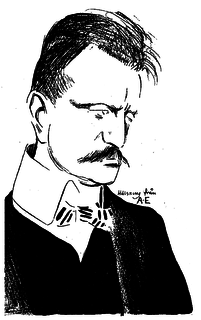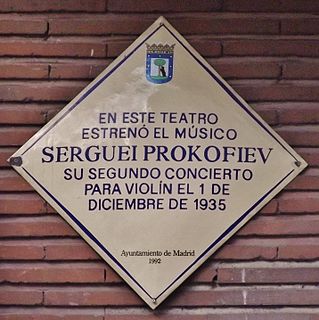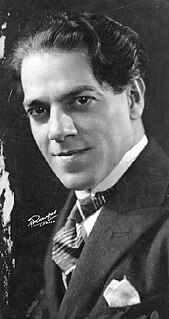Related Research Articles
In musical terminology, tempo is the speed or pace of a given piece. In classical music, tempo is typically indicated with an instruction at the start of a piece and is usually measured in beats per minute. In modern classical compositions, a "metronome mark" in beats per minute may supplement or replace the normal tempo marking, while in modern genres like electronic dance music, tempo will typically simply be stated in bpm.

Malcolm Benjamin Graham Christopher Williamson, AO, CBE was an Australian composer. He was the Master of the Queen's Music from 1975 until his death.

The Symphony No. 1 in E minor, Op. 39, by Jean Sibelius is a symphony started in 1898, and finished in early 1899, when Sibelius was 33. The work was first performed on 26 April 1899 by the Helsinki Philharmonic Orchestra, conducted by the composer, in an original version which has not survived. After the premiere, Sibelius made some revisions, resulting in the version performed today. The revised version was completed in the spring and summer of 1900, and was first performed in Berlin by the Helsinki Philharmonic, conducted by Robert Kajanus on 1 July 1900.

The Symphony No. 2 in D major, Op. 43, by Jean Sibelius was started in winter 1901 in Rapallo, Italy, shortly after the successful premiere of the popular Finlandia, and finished in 1902 in Finland. Sibelius said, "My second symphony is a confession of the soul."
The Young Person's Guide to the Orchestra is a 1945 musical composition by Benjamin Britten with a subtitle Variations and Fugue on a Theme of Purcell. It was based on the second movement, "Rondeau", of the Abdelazer suite. It was originally commissioned for the British educational documentary film called Instruments of the Orchestra released on 29 November 1946, directed by Muir Mathieson and featuring the London Symphony Orchestra conducted by Malcolm Sargent; Sargent also conducted the concert première on 15 October 1946 with the Pool Philharmonic in the Philharmonic Hall, Liverpool, England.

The Violin Concerto No. 2 in G minor, Op. 63, written in 1935 by Sergei Prokofiev, is a work in three movements:
- Allegro moderato
- Andante assai
- Allegro, ben marcato
The Symphony No. 2 by English composer William Walton was commissioned by the Royal Liverpool Philharmonic Society to celebrate the city's 750th anniversary in 1957. The Royal Liverpool Philharmonic Orchestra conducted by John Pritchard gave the first performance on 2 September 1960 at the Edinburgh Festival. George Szell gave the Continental Premiere with the Concertgebouw Orchestra in Amsterdam on 19 November 1960. Szell also conducted the US Premiere of the work on 29 December 1960 with the Cleveland Orchestra in that city and a few months later they made its first recording. Leopold Stokowski gave the work another early Continental performance in Vienna in May 1961 while on tour with the London Symphony Orchestra.
Sergei Prokofiev set about composing his Piano Concerto No. 1 in D-flat major, Op. 10, in 1911, and finished it the next year. The shortest of all his concertos, it is in one movement, about fifteen minutes in duration, and dedicated to the “dreaded Tcherepnin.”

Sancta Civitas is an oratorio by Ralph Vaughan Williams. Written between 1923 and 1925, it received its first performance in Oxford in May 1926, during the General Strike. Although its title is in Latin, the libretto is entirely in English, based upon texts from Revelation. The text is drawn from several translations, including Taverner's Bible. Late in life, Vaughan Williams called Sancta the favourite of his choral works.
The Symphony No. 1 in B♭ minor is one of two symphonies by the English composer William Walton. The composer had difficulty in completing the work, and its first public performance was given without the finale, in 1934. The complete four-movement work was premiered the following year.
The Symphony No. 6 by Arnold Bax was completed on February 10, 1935. The symphony is dedicated to Sir Adrian Boult. It is, according to David Parlett, "[Bax's] own favourite and widely regarded as his greatest ... powerful and tightly controlled".
Antonín Dvořák's Requiem in B♭ minor, Op. 89, B. 165, is a funeral Mass scored for soloists, choir and orchestra. It was composed in 1890 and performed for the first time on 9 October 1891, in Birmingham, England, with the composer conducting.
The Symphony No. 3 by Arnold Bax was completed in 1929. It was dedicated to Sir Henry Wood and is perhaps the most performed and most immediately approachable of Bax's symphonies.
The Symphony No. 7 by Arnold Bax was completed in 1939 and dedicated to "The People of America". The work received its first performance in Carnegie Hall, New York City, by the New York Philharmonic on 10 June 1939 under the baton of Sir Adrian Boult. It was commissioned by the British Council to be played at the 1939 New York World's Fair, along with Arthur Bliss's Piano Concerto in B-flat, and Ralph Vaughan Williams' Five Variants of Dives and Lazarus.
Cello Concerto in E minor, Op. 58 is a concerto written by Sergey Prokofiev between 1933 and 1938. Its duration is approximately 35 minutes. It consists of three movements:
- Andante – Poco meno mosso – Adagio
- Allegro giusto
- Tema (allegro) – Interludio 1 – Variations 1–3 – Interludio 2 – Variation 4 – Reminiscenza – Coda – Più mosso
An organ concerto is a piece of music, an instrumental concerto for a pipe organ soloist with an orchestra. The form first evolves in the 18th century, when composers including Antonio Vivaldi, Johann Sebastian Bach and George Frideric Handel wrote organ concertos with small orchestras, and with solo parts which rarely call for the organ pedal board. During the Classical period the organ concerto became popular in many places, especially in Bavaria, Austria and Bohemia, reaching a position of being almost an integral part of the church music tradition of jubilus character. From the Romantic era fewer works are known. Finally, there are some 20th- and 21st-century examples, of which the concerto by Francis Poulenc has entered the basic repertoire, and is quite frequently played.
The Symphony No. 1 in C major by Mily Balakirev is scored for 3 flutes, oboe, English horn, 3 clarinets, 2 bassoons, 4 horns, 2 trumpets, 3 trombones, tuba, timpani, triangle, cymbals, snare drum, bass drum, 2 harps, first and second violins, violas, cellos and double basses.
Dmitry Kabalevsky's Piano Sonata No. 2 in E-flat major, Op. 45 was composed in 1945 and dedicated to Emil Gilels. It is the most vast and dramatic of Kabalevsky's three sonatas. A War Sonata such as Sergei Prokofiev's trilogy, its first movement has been compared to that of Dmitri Shostakovich's Symphony No. 7.
Danses concertantes is a work for chamber orchestra by Igor Stravinsky, composed in 1942. A performance lasts about twenty minutes. Although written as an abstract ballet for concert performance, it has been choreographed numerous times.

Symphony No. 8 is a composition by the Brazilian composer Heitor Villa-Lobos, written in 1950. A performance lasts about 25 minutes